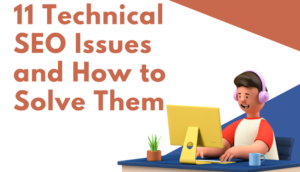Business blogging is an effective way for your online store to gain traction with your potential audience. However, to use content marketing to boost your store’s organic traffic, you must know the type of articles that appeal to readers.
These types of articles are proven to be the best for SEO and online content marketing. When Google and your audience love the content you create, you will start to see a difference in your visitor stats.
Consider these five popular types of articles and try to design a content strategy using them to test what fits your business goals and different audience types.
Listicles
One way to drive organic traffic to your website is to offer a curated list of valuable items – like the one you’re reading right now – that will inform your audience and show them options to solve their pressing needs. People like to know what solutions are available, and providing a good list will save readers a lot of time – they are likely to thank you for it by purchasing from your store.
Additionally, using numbers within article headlines is a proven and effective content marketing strategy. For instance, A/B testing conducted by Campaign Monitor on an email sequence proves that numbers within a subject line can boost open rates by up to 57%.
What Are the Benefits of Listicles?
There are many benefits to using list articles for your content marketing:
Easy to scan: Your readers can skim over subheaders until they see the list item that eventually captures their attention. Lists are a great time saver.
Quick inspiration: A list quickly gets to the point, making them excellent for giving your audience quick inspiration and ideas.
Highly engaging: Human beings tend to read lists more than many other types of writing because they provide the psychological satisfaction of completing mini-tasks.
Simple to remember: Making lists has, for a long time, been the ultimate way people use to remember anything.
Help readers feel organized: A list appeals to the natural human tendency to put things in categories.
Round-Up Articles
A round-up article is an excellent way to collect the opinions of various experts within your niche to support a conclusion. The round-up helps your readers see the main points of a topic they are interested in, allowing them to weigh the pros and cons without getting lost in piles of online research from different sources.
When properly optimized, a list has the potential for incredible conversions for your store. Each article could earn you hundreds or thousands of dollars monthly with just a little effort.
Best of all, if you have a good template for your product round-ups, you can reuse it across articles, making them quick to write, replicate, and fine-tune. Furthermore, you can test changes on a post and then roll them out for other articles if there are positive results.
Plus, once you’ve got the hang of it, writing a product round-up is straightforward since you do not require any special plugins or tools to create them. However, it would help if you combined empathy for your readers with excellent conversion copywriting techniques to make the most significant impact.
There are five essential features of an impactful round-up. They are:
A catchy title
An authoritative and concise introduction
A product comparison table
Buyer’s guide
Individual product reviews
How To Promote Your Expert Round-Up
Once the link to your expert product round-up goes live, you need to build engagement. Share your article on your social media pages, then email the link to your social post to your contributors. Invite your experts to comment on your post to trigger social algorithms to expand its organic reach.
How-To Articles
Every day, millions of readers look for how-to articles from people with expertise and knowledge within a specific field of interest. These people may want to do something but may not know how they can get started or the challenges they may face.
The how-to article makes it easy for your audience to understand how to set up and use the product or service you sell on your online store. As a result, they are not only more likely to make a purchase but will also recommend others to your site, driving up your traffic.
No matter the breadth of your knowledge of a topic, there are several standard steps you should take when you write an instructional sequence that people will want to read and share:
1. Pick your topic: Identify a subject you are knowledgeable about, then choose a specific context as the focus of your article. Something that you are passionate about and well-versed in not only makes for good reading but will also ensure that you maintain your interest and motivation as you write the article.
2. Establish your audience’s needs: Your audience visits your blog or article because they want to learn how to do something or solve a problem they have. If you use vague jargon or too many complicated terms, your readers may not understand, making your article ineffective. Be sure to tailor your style to your target audience, keep readers’ attention, and maximize comprehension.
3. Conduct adequate research: It is essential to collect all the information you can about the topic, product, or service because you need your readers to trust the information you offer. Despite how much you know regarding the subject, you should be ready to provide credible supportive sources when writing your article. The depth of your research will paint you as an authority in your field and boost your legitimacy.
4. Outline your actions in steps: Starting with a rough first draft containing the article’s main points will help you keep order in your writing process and make it easier to organize your thoughts coherently. The outline will also help you to figure out the best tone to use in the final copy and see if any steps require further information before you start writing.
5. Write down your process in detail: The initial paragraph of your piece should summarize your how-to article, explaining what you want to teach the reader. Flesh out each step of your outline thoroughly, providing all the pertinent information that could interest your audience. Do not forget to explain the common mistakes that people may make so that the reader knows what not to do when undertaking the process.
6. Keep everything simple: Overelaborating, including a lot of irrelevant information, or going off on a tangent will confuse the reader and dent your credibility in their eyes. Writing a helpful how-to article involves streamlining the solution by explaining it clearly from your first sentence to the last.
Buyer Guides
When you write excellent buyer guides for your readers, you ensure that they return to you repeatedly for advice on the best products or services to use and how to get the best out of their purchase or subscription.
Making your buyer guides comprehensive by including a lot of detail and examples will make your blog or website the prime source of information within your niche. The article contains all the features, components, and benefits of your product or service.
A guide effectively offers consumers whatever they need to solve their problems and helps them decide to shop at your store instead of your competitors. Use your copy to show the audience the features that set your store and products apart from similar businesses in your industry.
Your guides can take on many formats, and it is up to you to decide what works best for your store. Select the layout that best highlights what readers need to know the most. However, there are a few rules of thumb you should follow when writing a buyer guide to drive organic traffic to your store:
Highlight your product or offer’s essential features: Buyer guides are an excellent source of information on specific features that could help you make a sale.
Teach your reader how to make the most of your product: Does your product provide a specific and unique solution? Should your customers use it in a certain way to get the most value? Providing information on how to use the product or service is helpful and highlights the item’s benefits in a way your readers cannot ignore.
Compare your offers to similar companies in your niche: If you provide a similar (but different) offer from other businesses in your industry, a side-by-side comparison will help shoppers decide which product best suits their needs.
Provide solutions: If readers have problems with product x, then your buyer guide can recommend product y – with y being your product. Use your content to highlight the buyer’s pain points and explain how your product, service, or offer is a better solution.
Although a buyer guide aims to attract readers looking for information, do not shy away from highlighting your offer’s main selling points. Use your copy to showcase the specifics of the products available on the market, but remember to add why you think your deal is so valuable and outshines the competition.
Comparison Articles
If there is something that the modern consumer has too much of, it is choice.
Whether choosing what store they should shop at, the best smartphone to buy, or the most reliable roofing company, there are dozens or hundreds of choices and alternatives available at the click of a button, making it difficult to choose one.
Naturally, people will tend to compare and contrast the options placed before them, making comparison articles a highly prized component of many content marketing strategies for online stores.
A comparison article is a piece that offers a direct comparison of alternative, competing products, solutions, or services. They help potential buyers to understand the subtle differences or similarities between the choices available so they can make the best decision and avoid buyer’s remorse.
Writing comparison content for products and services you sell at your store may appear counter-intuitive since it compares your offering to your leading competitors.
However, by embracing the modern consumer’s need to compare and contrast the choices available, your comparison article will get you in front of your target when they are close to making a buying decision. By helping your reader weigh their options, you can guide the conversation around the comparison, building trust as an expert who provides the answers that buyers seek.
Once the reader understands the problem they are trying to solve, your comparison piece helps them make a more confident decision, more often than not in your favor.
Final Thoughts
As an entrepreneur, it is vital to continually experiment with different types of articles when designing your content marketing strategy. Although all the article types above effectively drive organic traffic to online stores, the uniqueness of each business means there is no one-size-fits-all solution.
Using tools like Google Analytics, you can see the specific article types that perform best for your target audience and make the needed tweaks to your strategy. This way, you will constantly create the kind of content your targets want and keep attracting potential customers to your store.





